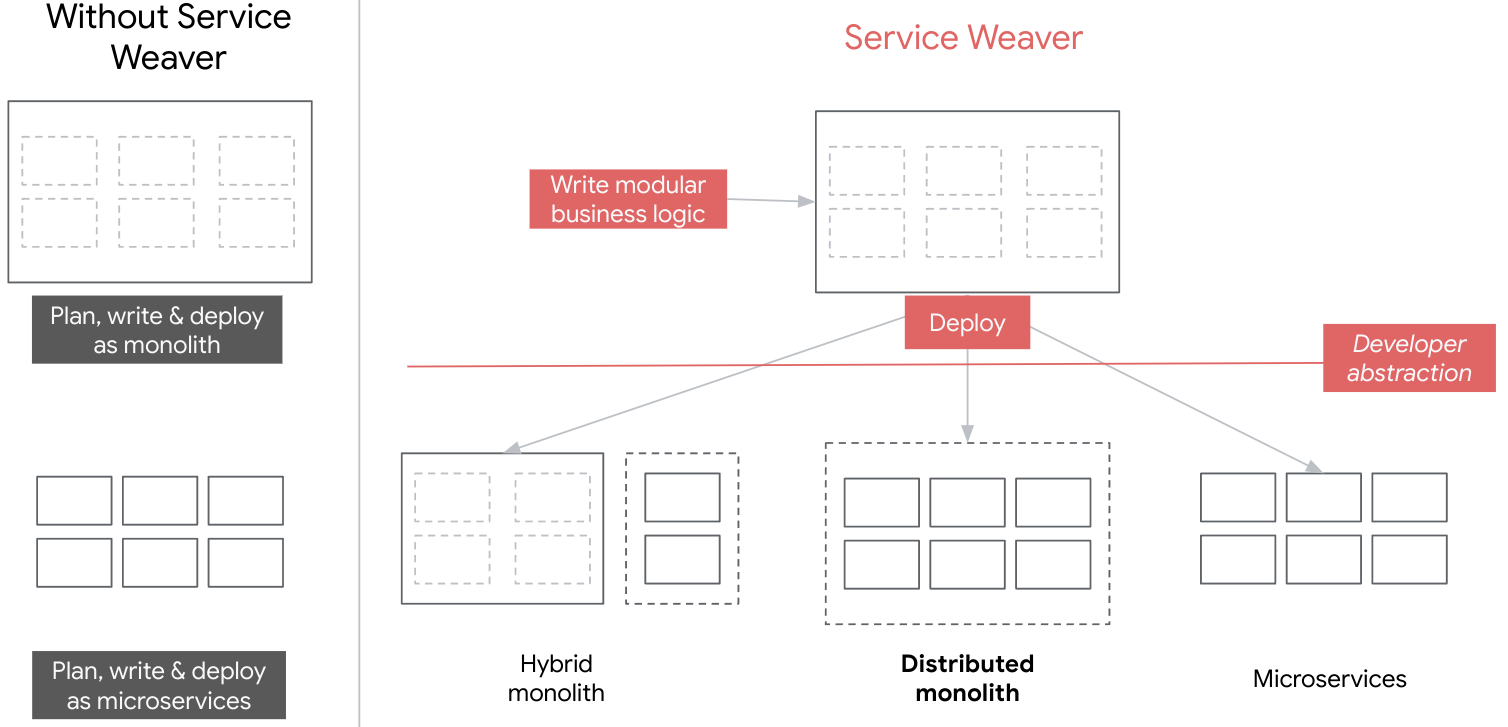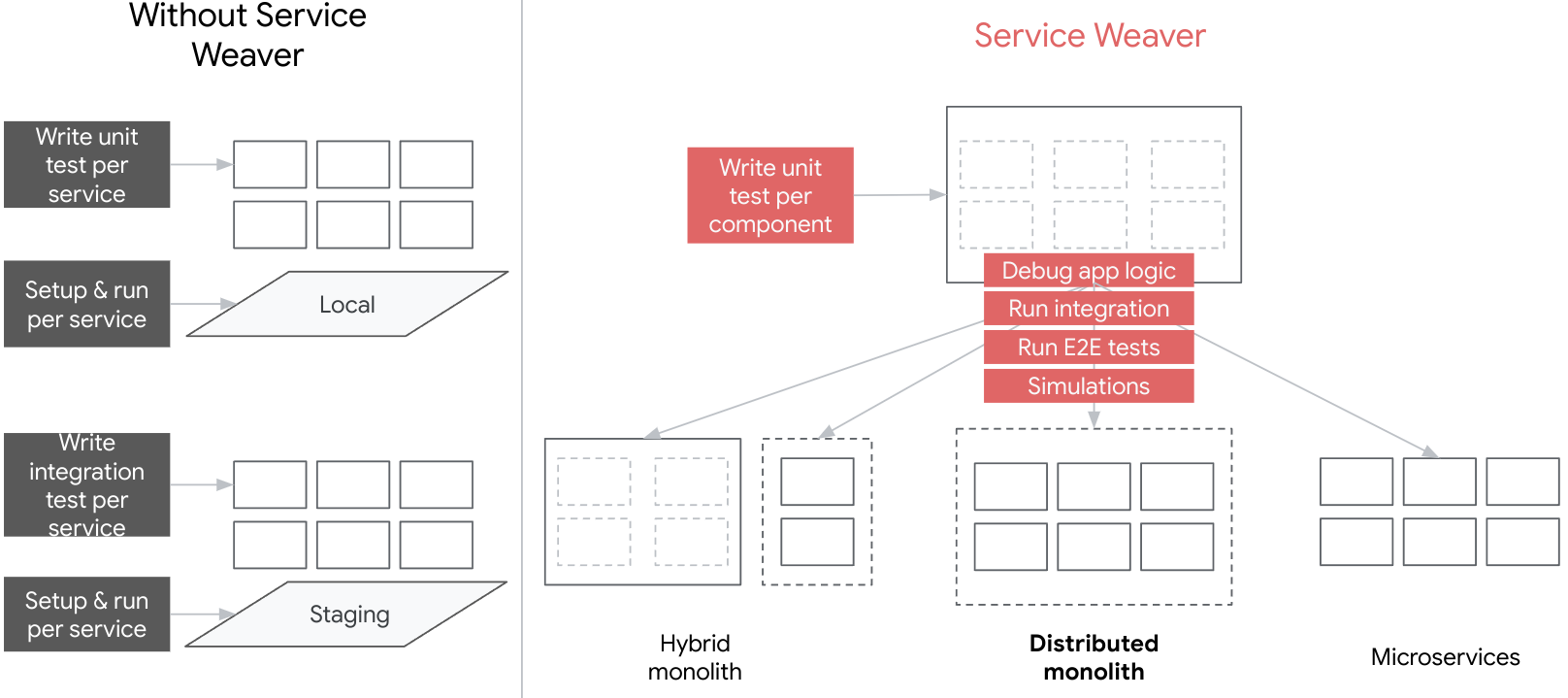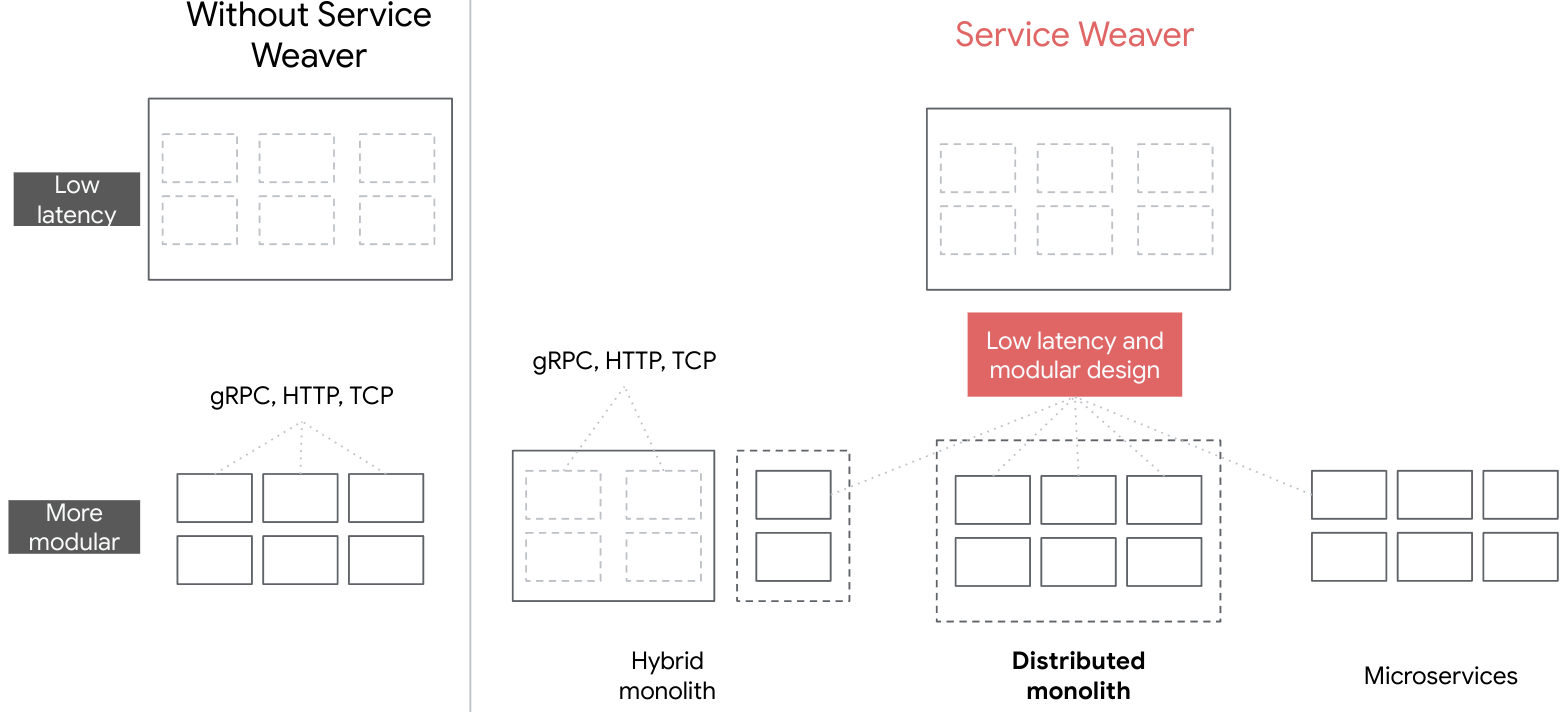Improve Cloud Efficiency with Service Weaver
Overview
📝 Service Weaver provides a simplified, safe and scalable way to improve backend cloud application efficiency for organizations looking to reduce their cloud spend.
Currently, organizations top challenge is managing cloud spending with IT leaders expecting 31% of their operating costs going to the cloud and over ⅔ expecting YoY increases in cloud spending. One way that organizations can reduce their cloud spending is by improving the efficiency of developing and maintaining their cloud applications. Organizations can evaluate three key areas of inefficiencies:
- Development overhead that negatively impacts feature velocity;
- IT burden to setup and maintain apps for secure, reliable environments;
- Compute waste that over-allocates compute resources needed to run globally available applications.
Service Weaver provides an effective development solution that can holistically improve these efficiency challenges across the board.
Simplify development overhead
Service Weaver can simplify development overhead with a flexible, easy-to-use framework that enables development teams to focus on providing differentiating value.
Organizations continue to focus on making teams more effective at balancing engineering productivity, product quality and differentiating features. Microservices have made this more difficult by adding overhead for development teams, who increasingly spend their time on planning, testing, tech debt and incident response.
According to the most recent Go Developer survey, "testing and debugging [is] the biggest challenge when writing microservice-based applications, followed by operational complexity." Teams also report high upfront cognitive load on architectural design decisions to meet evolving production app environment specifications, which usually results in accumulated tech debt. Platform/IT teams continue deepening investments in developer tools (e.g. Backstage, Argo, Git) and homegrown platforms to make operator teams more productive in the cloud.
Service Weaver can complement the developer productivity ecosystem with a flexible framework that enables teams to minimize upfront architectural decisions (Figure 1), conduct comprehensive integration / E2E tests locally (Figure 2), and deploy scalable apps on containerized runtimes (e.g. GKE, EKS, Cloud Run). Teams have the choice to deploy applications with minimal upfront environment configurations to focus on business logic and maximize feature velocity. As application traffic patterns grow and change, developers can dynamically update the application configuration with minimal need to refactor, re-test or re-deploy app version changes that impact underlying application architecture.
 Figure 1: Service Weaver removes the upfront cognitive load of planning
monolith or microservice architecture.
Figure 1: Service Weaver removes the upfront cognitive load of planning
monolith or microservice architecture.
 Figure 2: Service Weaver reduces test toil associated with setting up and
managing remote testing infrastructure with comprehensive local testing capabilities.
Figure 2: Service Weaver reduces test toil associated with setting up and
managing remote testing infrastructure with comprehensive local testing capabilities.
Minimize IT burden
Service Weaver can help minimize IT burden with a way to bootstrap safe backend mesh applications.
Organizations continue to deepen adoption of public cloud platforms (e.g. GCP) to offload IT burden when running reliable applications. Teams need to maintain feature velocity while meeting organizational security and compliance needs.
One of the top pain points preventing cloud adoption is simplifying authentication and security needs while maintaining compliance with regulatory requirements. End users want confidence that their data is protected in-transit and explicitly used for intended purposes; while operator teams need simpler ways to remediate incidents and prevent misuse. Platform / IT teams continue growing the list of networking tools and policies to make connecting and routing traffic between services more reliable and secure. This has resulted in a higher IT burden across platform, operator and development teams.
Service Weaver can minimize IT burden for teams who are looking for an easy-to-use way to bootstrap a safer app on public cloud platforms. Once apps are bootstrapped, applications will have default capabilities to:
- Ensure data in-transit is secure with mTLS;
- Reduce cascading failures with fault isolated components;
- Automate IAM, logging and monitoring when deploying to Google Cloud (Figure 3).
Teams can also choose to export data to open-source observability providers such as Prometheus and Grafana.
 Figure 3: Service Weaver provides a reliable, secure way to deploy
applications with fault isolated components, mTLS inter-component communication,
and GCP observability by default.
Figure 3: Service Weaver provides a reliable, secure way to deploy
applications with fault isolated components, mTLS inter-component communication,
and GCP observability by default.
Reduce computing waste
Service Weaver can help organizations reduce compute waste of a globally-available application with better networking and traffic management primitives.
Currently, an estimated 32% of compute resources are wasted with 64% of organizations focused on maximizing compute resource utilization and 50% removing idle resources. However, as applications become more distributed, network latency and traffic imbalances can contribute a larger portion of computing waste that can unknowingly scale costs.
Organizations need a highly customizable, intuitive way to improve these scaling inefficiencies depending on the needs of their distributed applications. Currently, containerized runtimes raise the abstraction layer of computing efficiency to the pod/container level. They provide operator teams with configuration knobs to auto-scale based on average pod-level utilization metrics and balance traffic intra- or inter-region using default pod metrics. Depending on the traffic distribution through an application, this can still leave a "fat-tail" of pods that are highly underutilized.
To minimize computing waste, teams need to holistically evaluate:
- Lower latency networking;
- Custom load balancing metrics;
- Improved sharding capabilities;
- Enhanced aggregation mechanisms for horizontal auto-scaling that optimizes app-specific configuration.
More importantly, they want to interact with these capabilities from a highly simplified interface.
Service Weaver provides an easy-to-use framework with built-in primitives to address scaling inefficiencies with up to 9x reduction in compute waste out-of-the-box (Figure 5). Service Weaver also provides advanced capabilities e.g. inter-component communication (Figure 4) to further evaluate and fine-tune efficiencies according to your scalability or performance needs to enable operators to experiment and minimize compute waste with minimal effort.
We plan to go further in-depth on this topic in an upcoming post.
 Figure 4: Service Weaver has an advanced inter-component communication
protocol that is up to 3X faster than gRPC.
Figure 4: Service Weaver has an advanced inter-component communication
protocol that is up to 3X faster than gRPC.

Figure 5: Benchmarking an 11-microservice Online Boutique app with a rewritten 11-component Service Weaver modulith on GKE resulted in an overall 9X reduction in CPUs when loading ~10K queries per second. See our paper for mode details on our benchmarking.
How to get started?
- To get started on your first app, we recommend following this step-by-step guide.
- To evaluate your application in a staging or production environment, you can take the multiprocess executor and deploy it to Cloud Run, GKE or Kubernetes.
Learn more about Service Weaver
There are several resources that can help you learn more about how Service Weaver works.